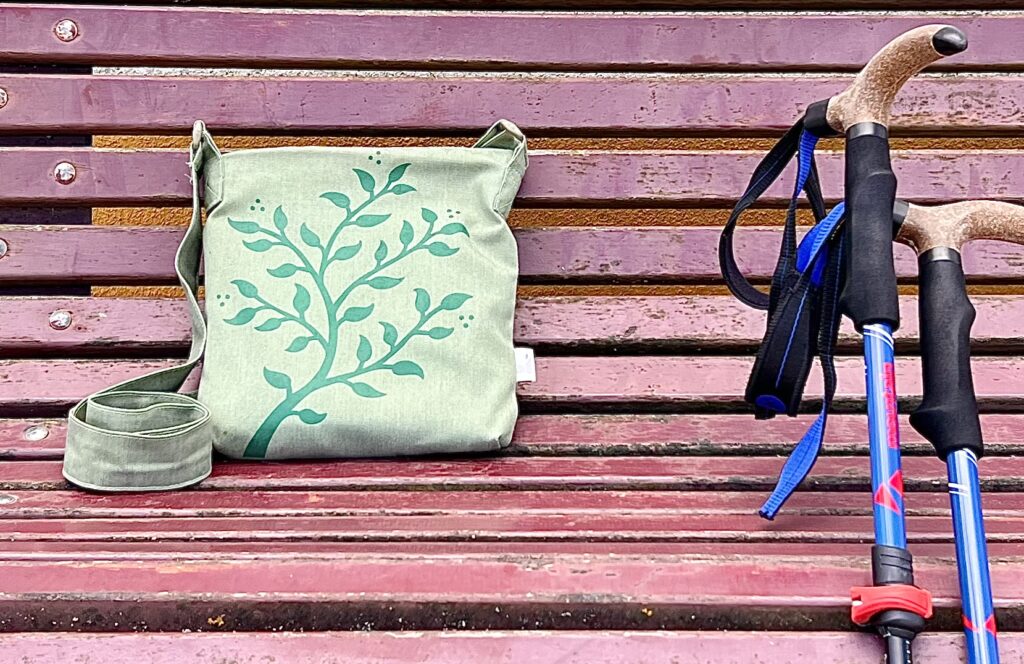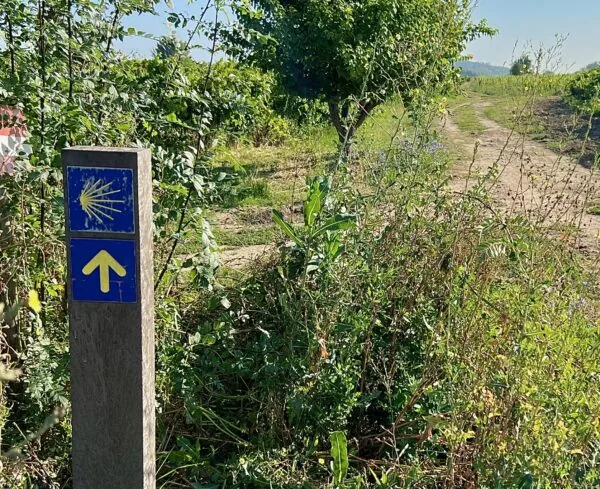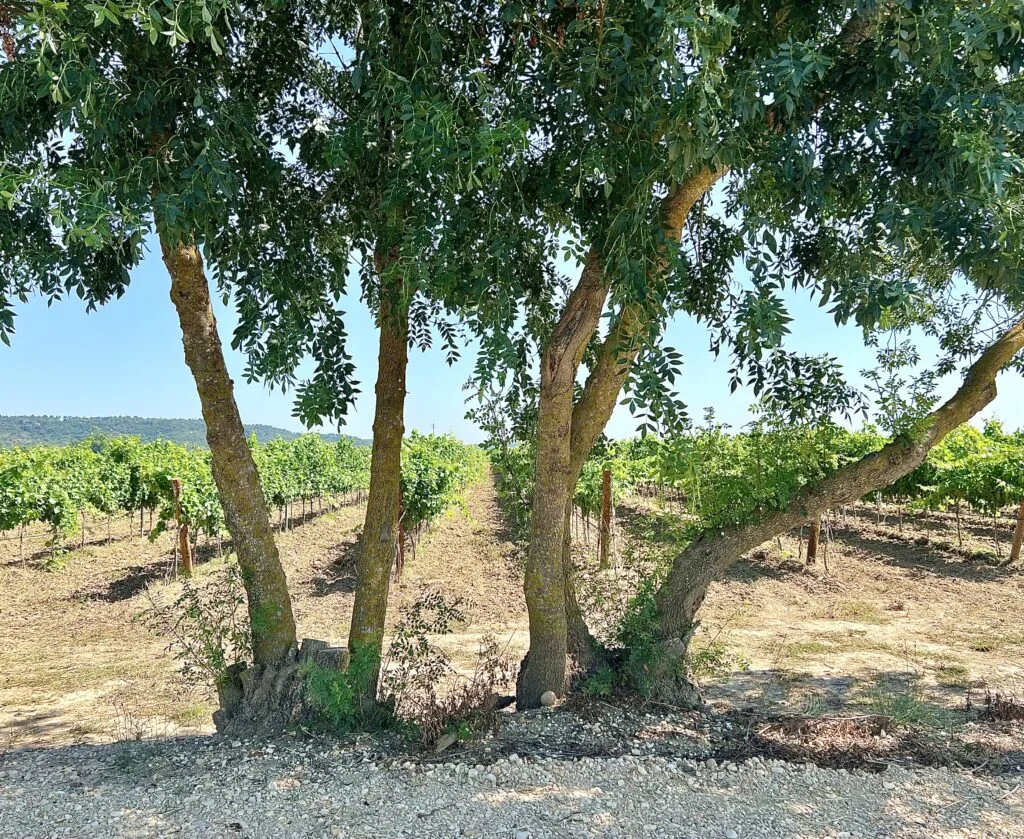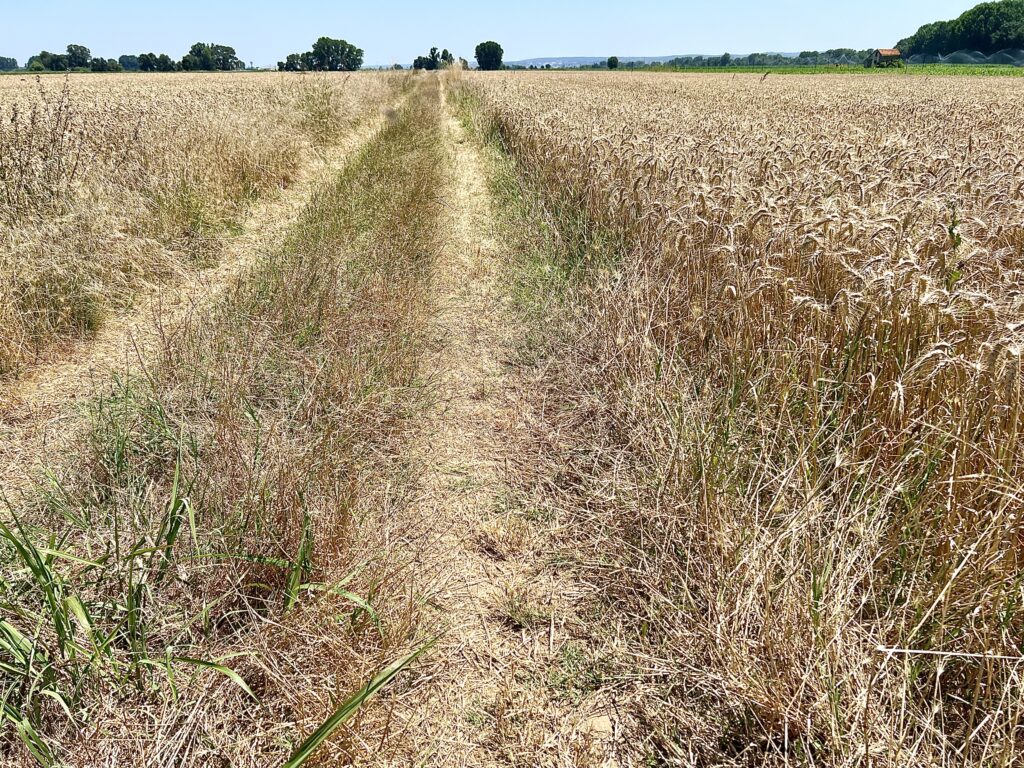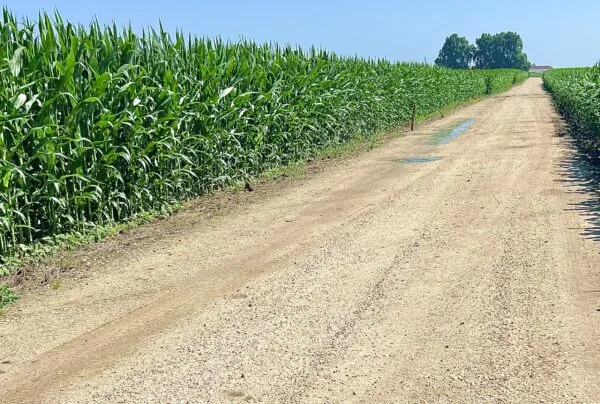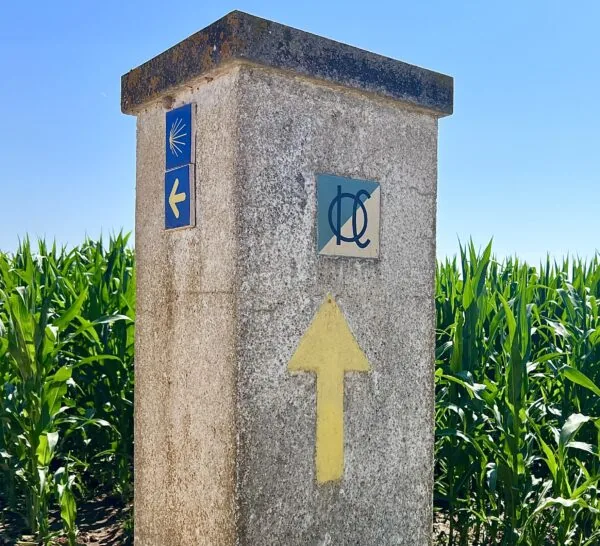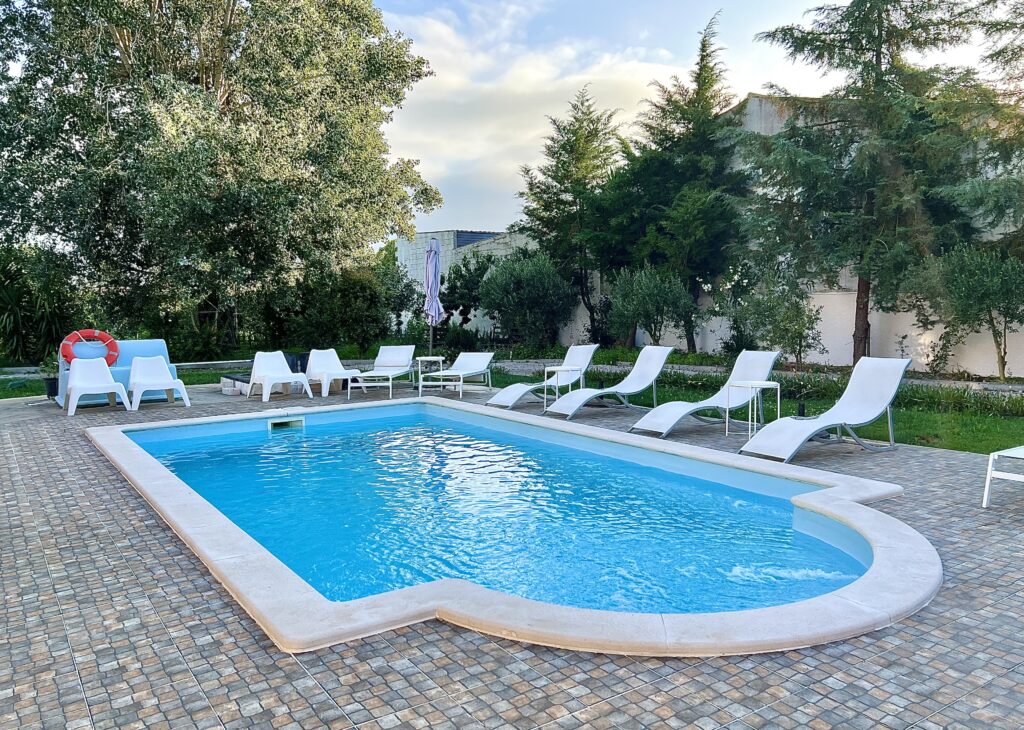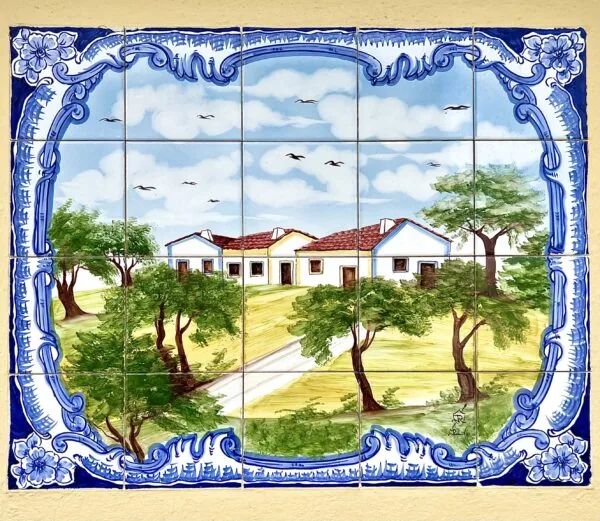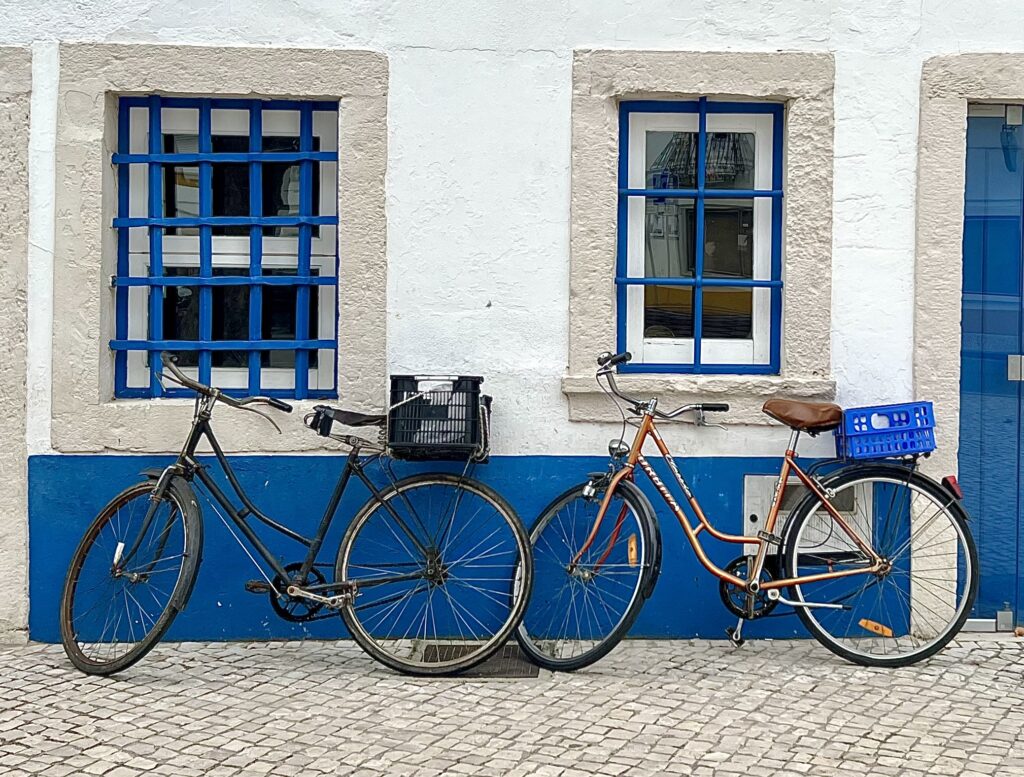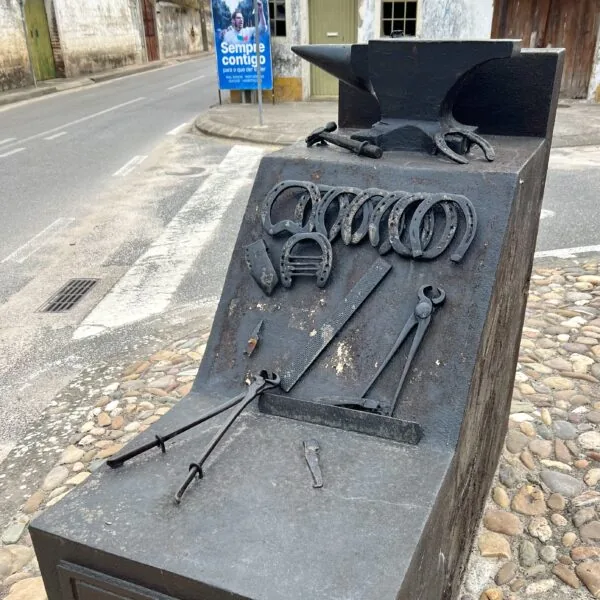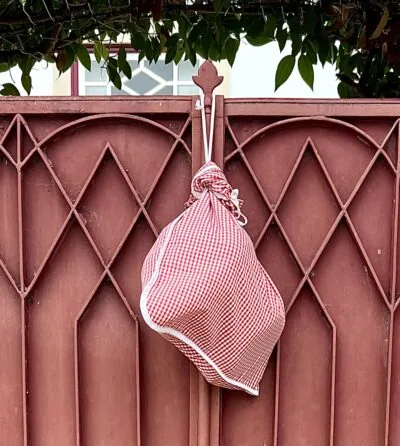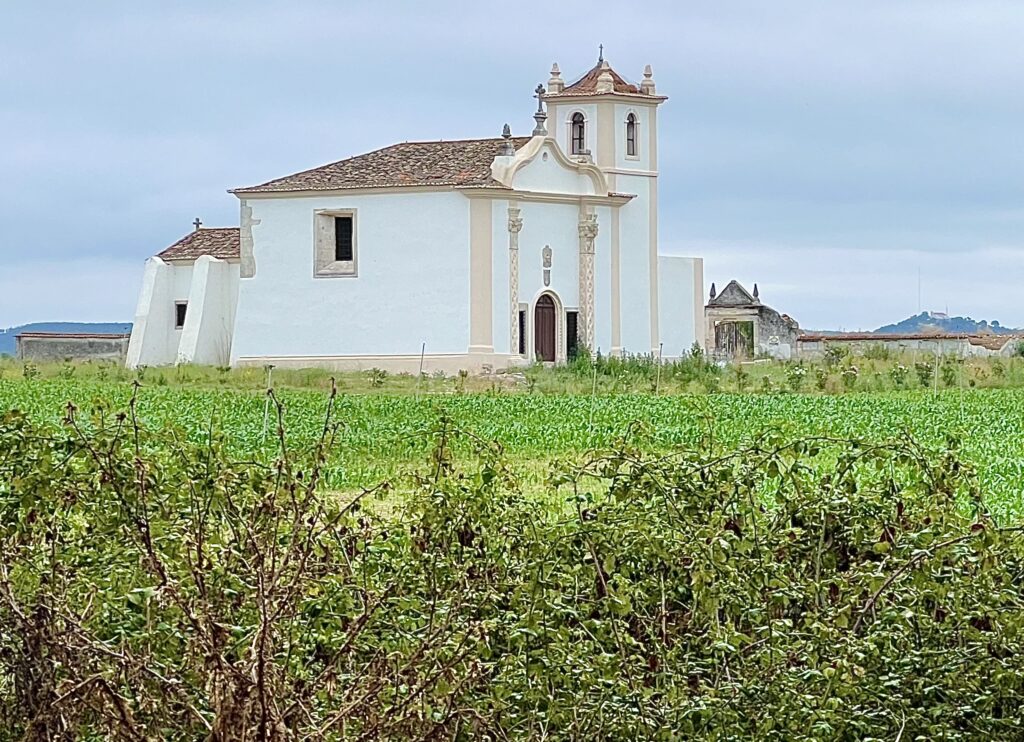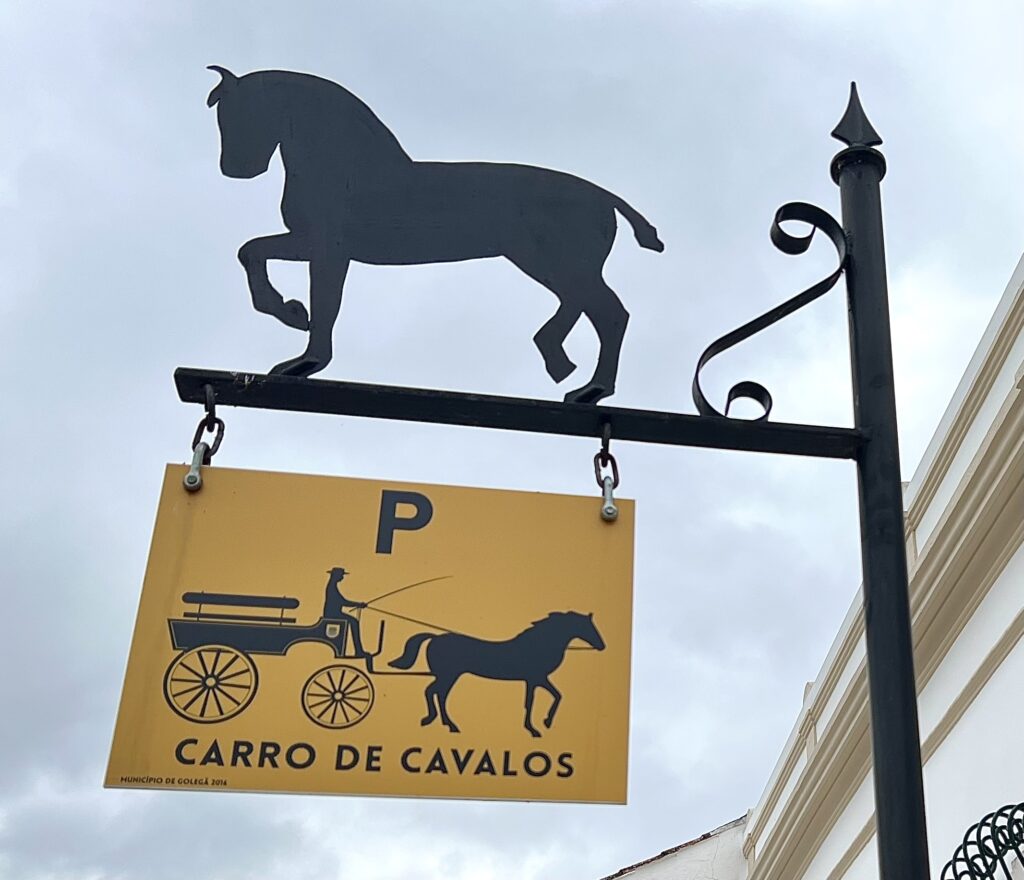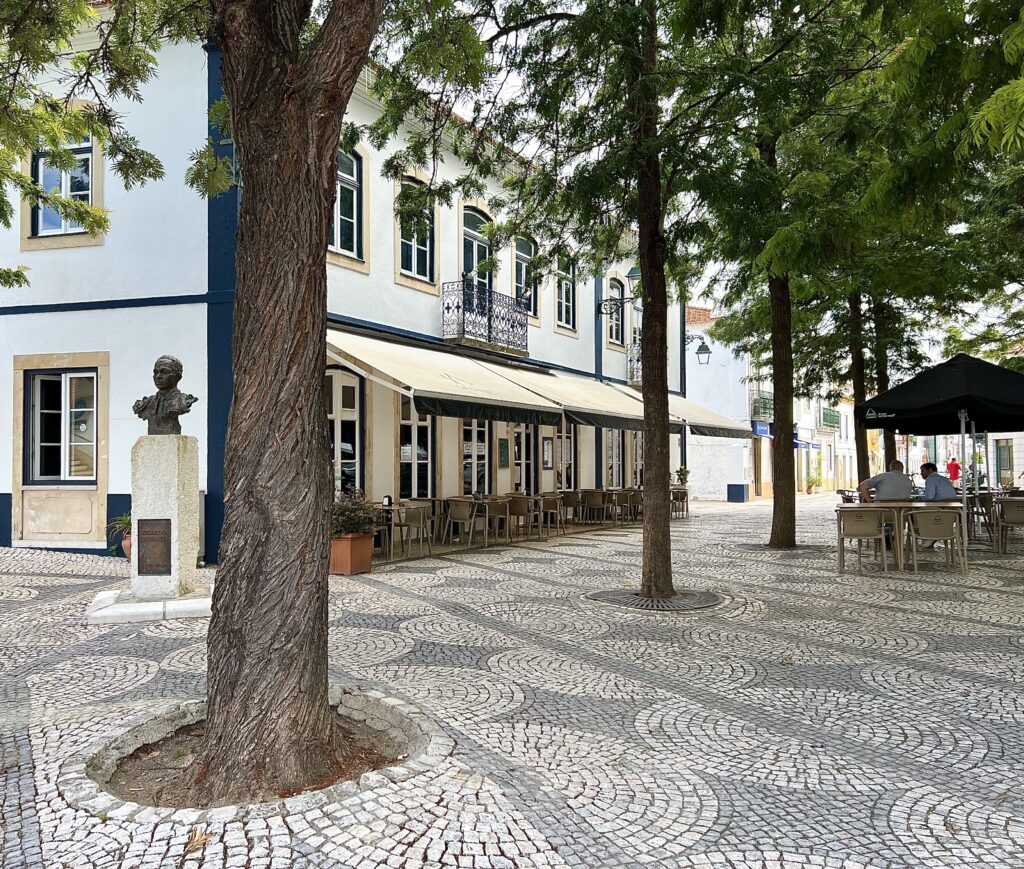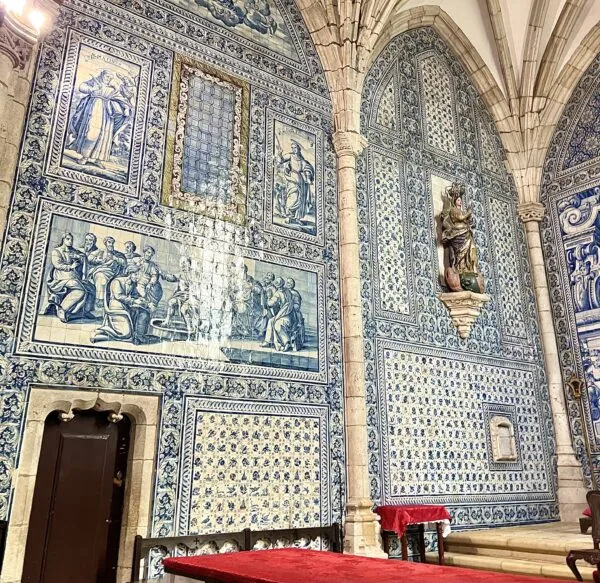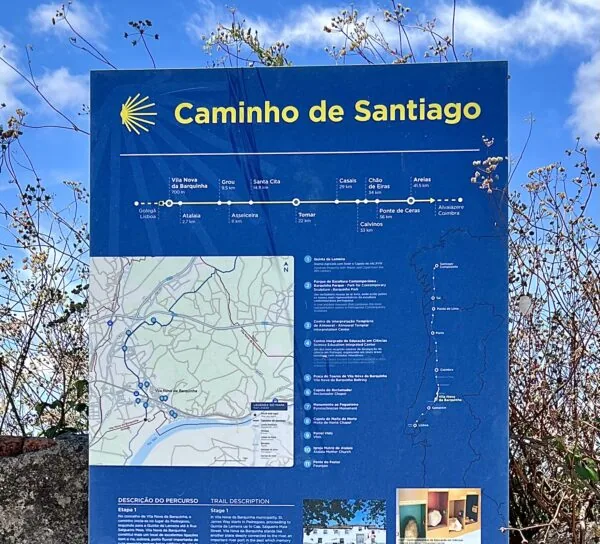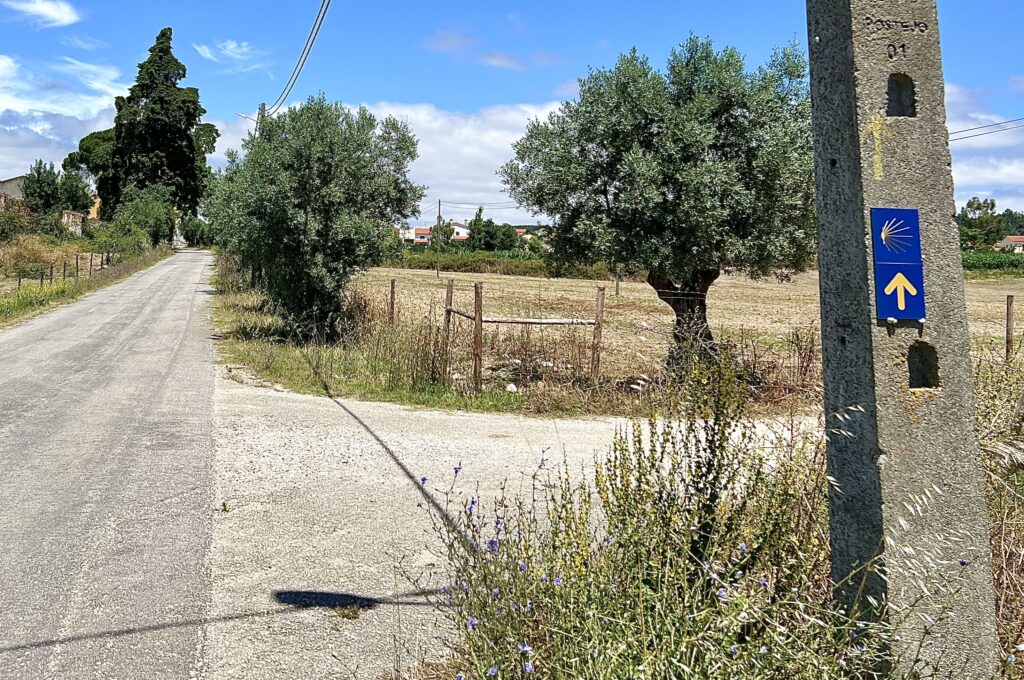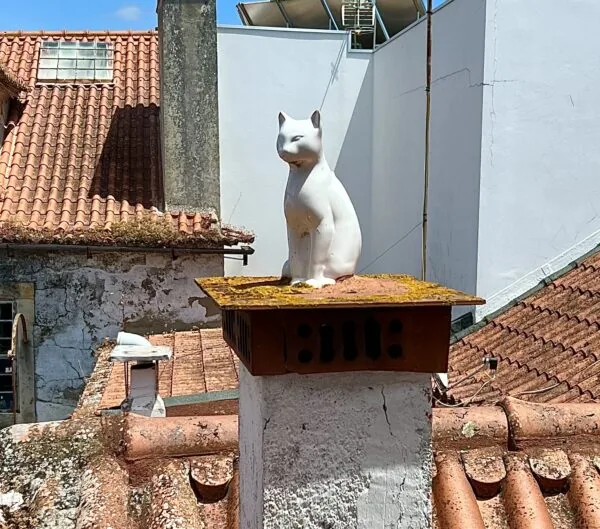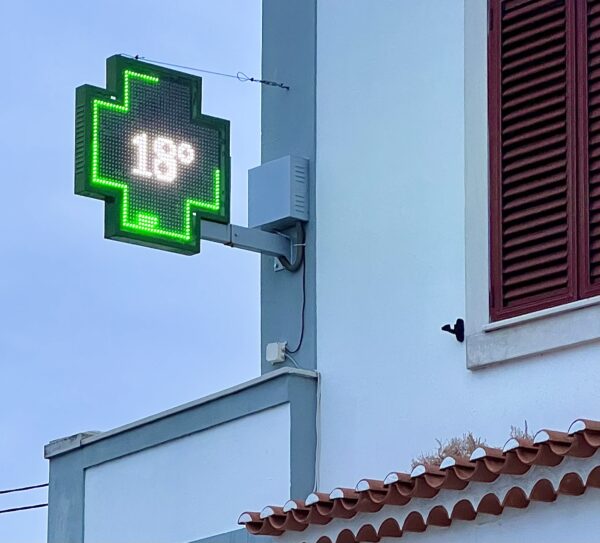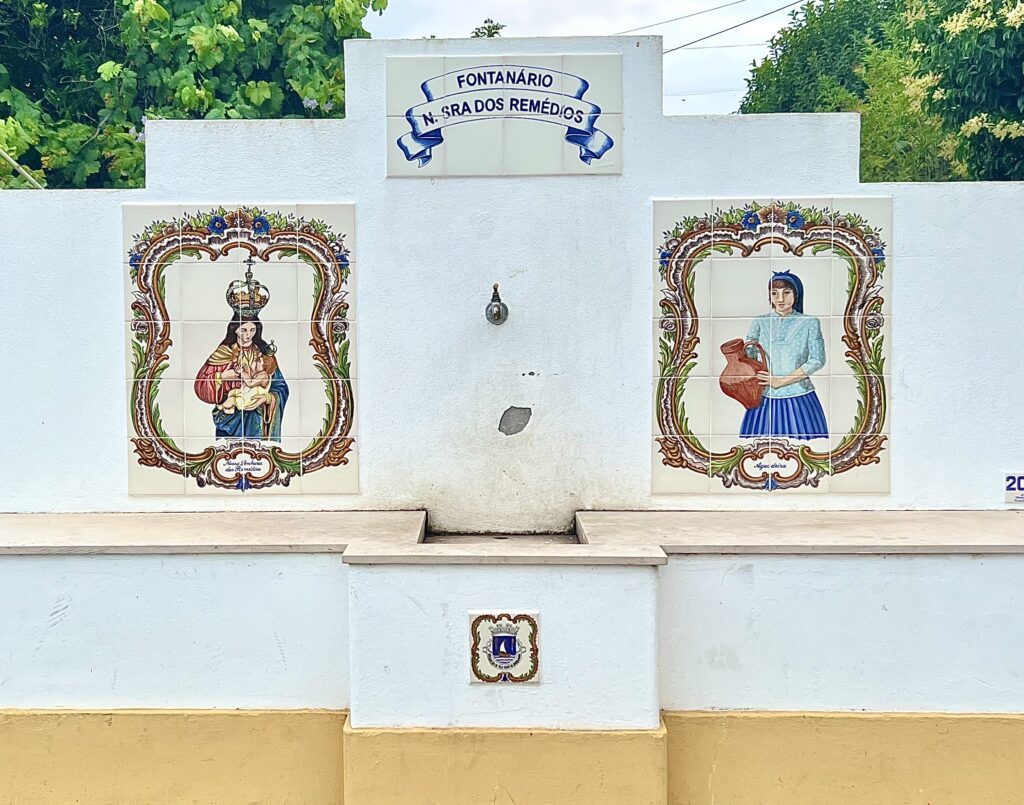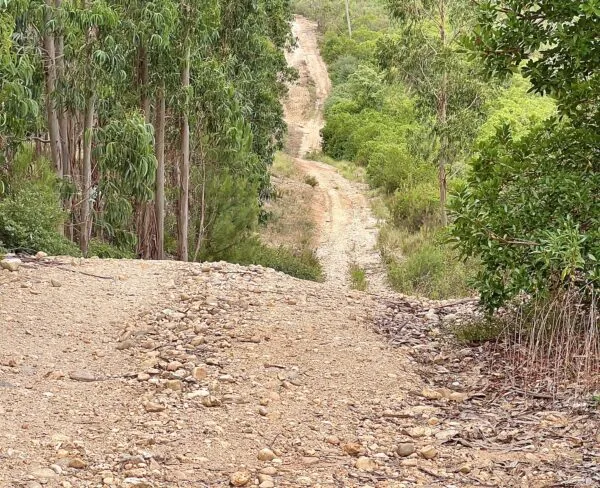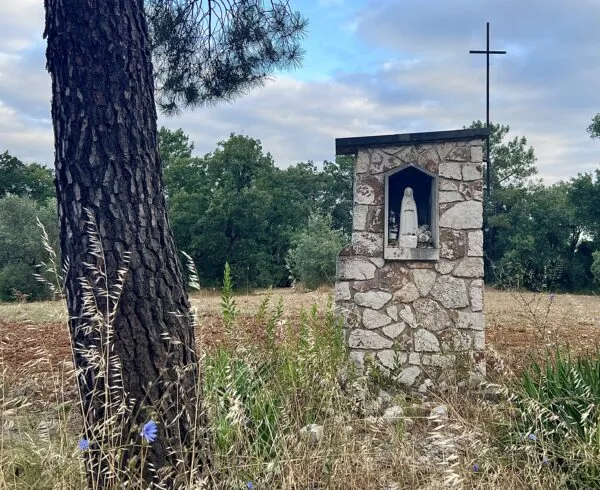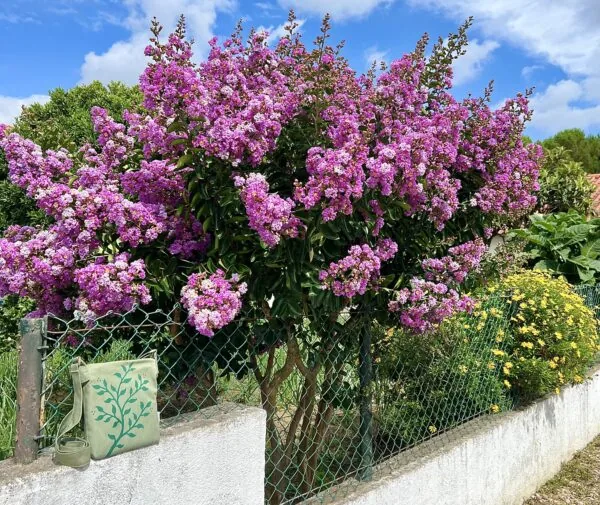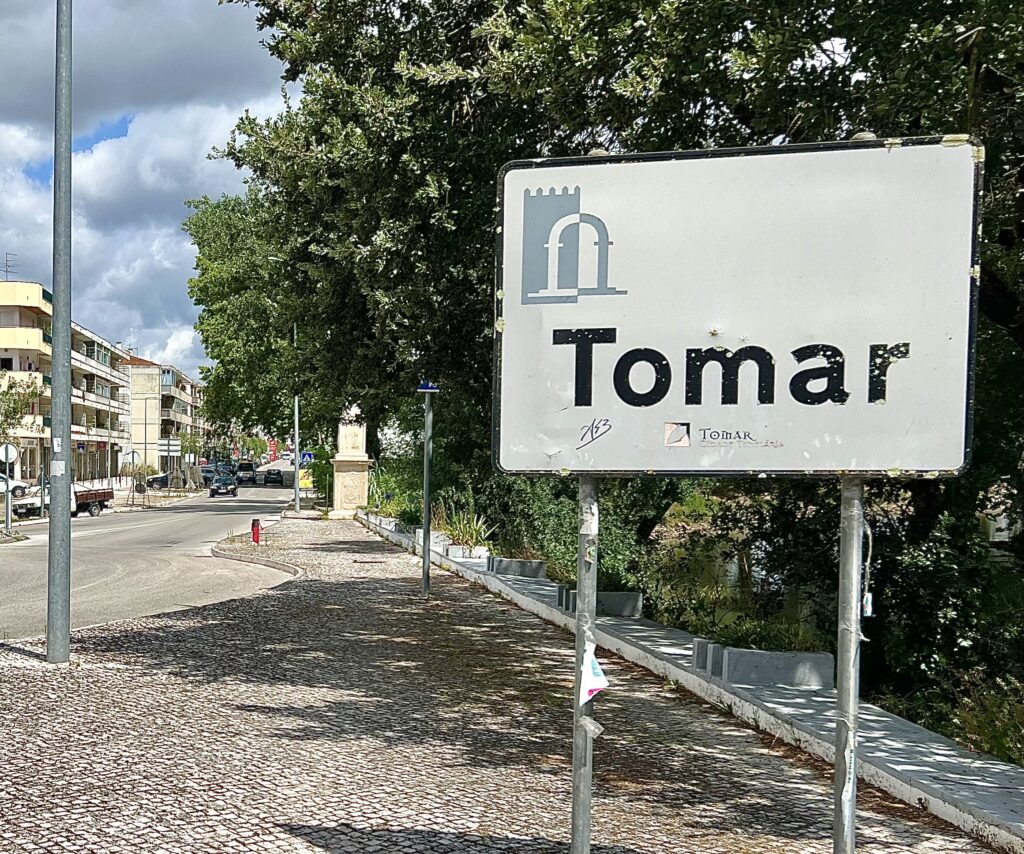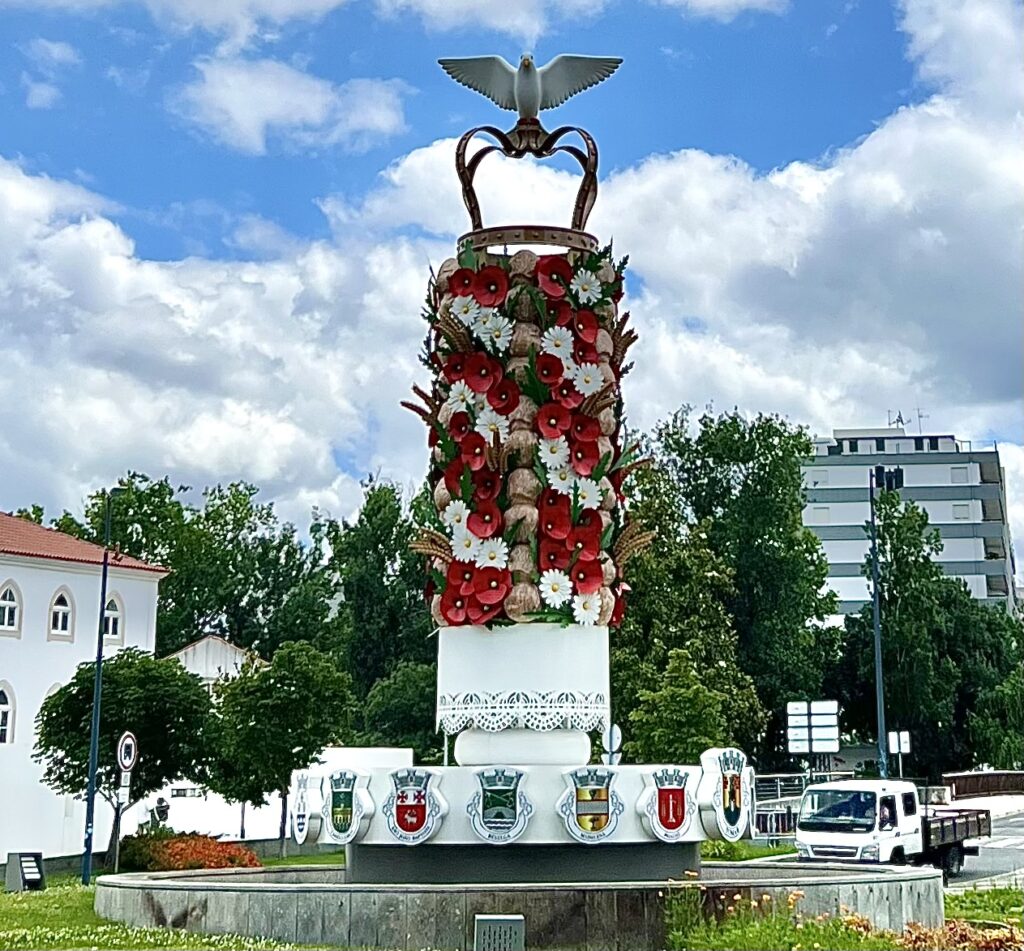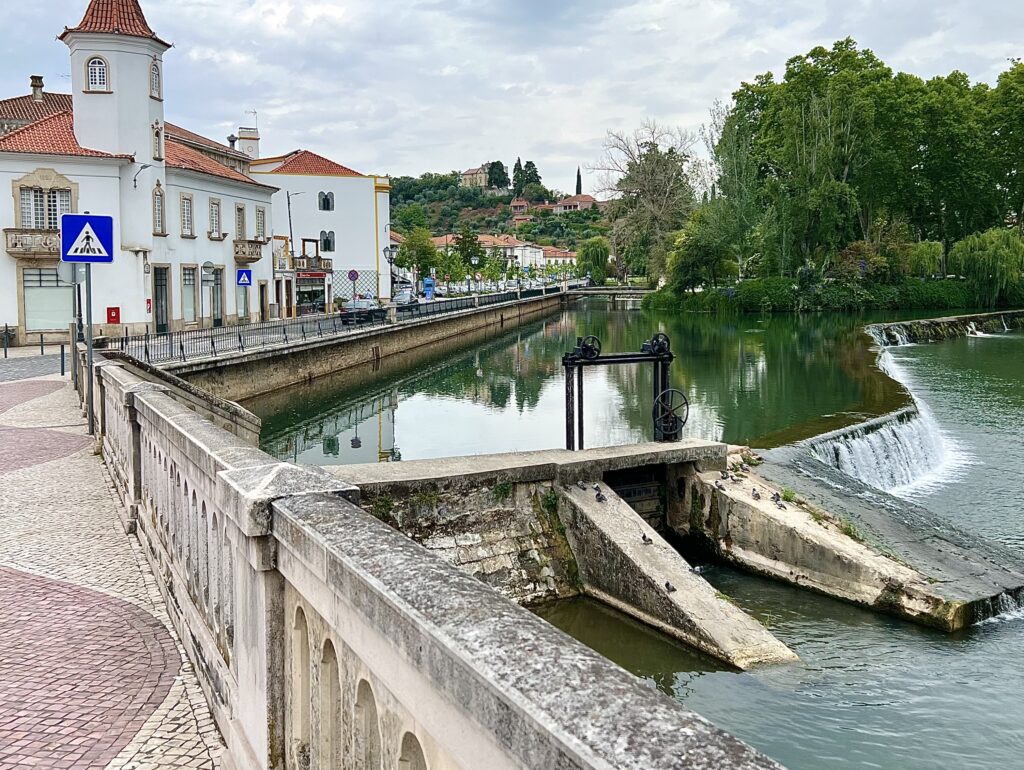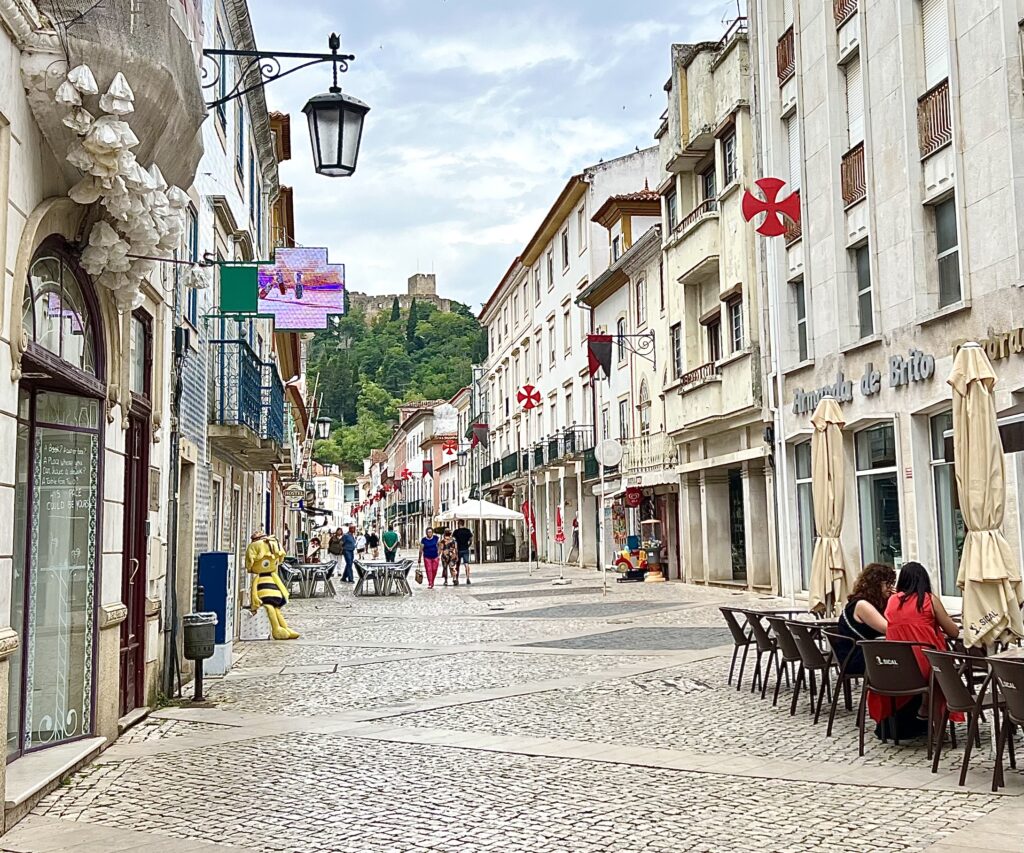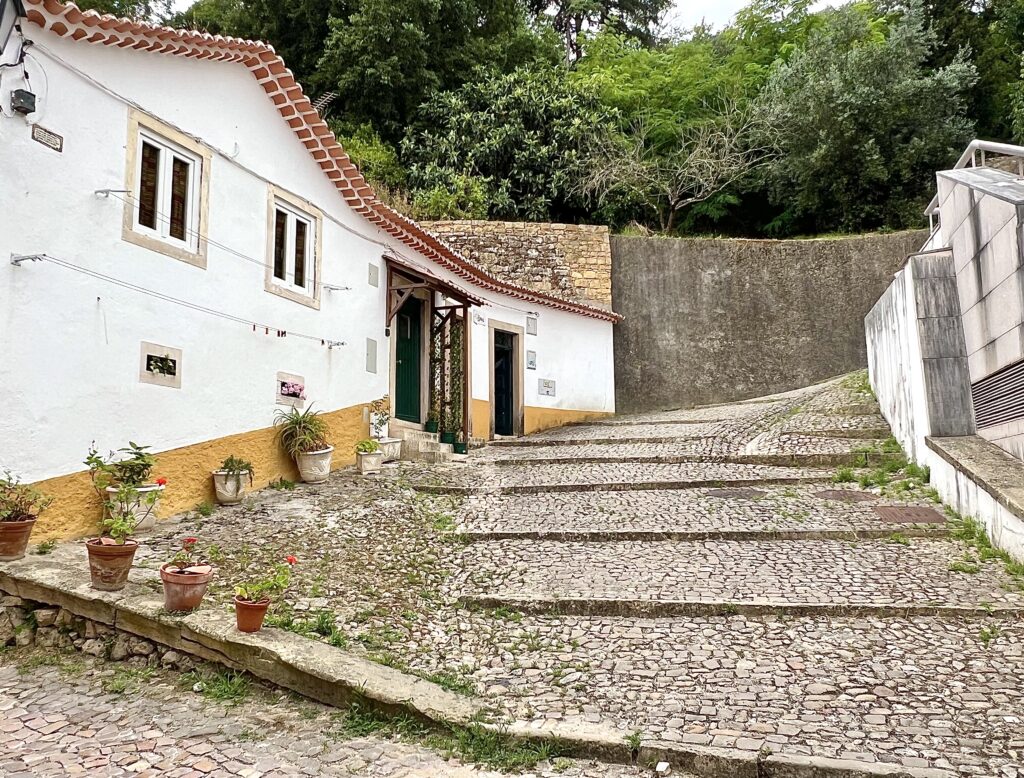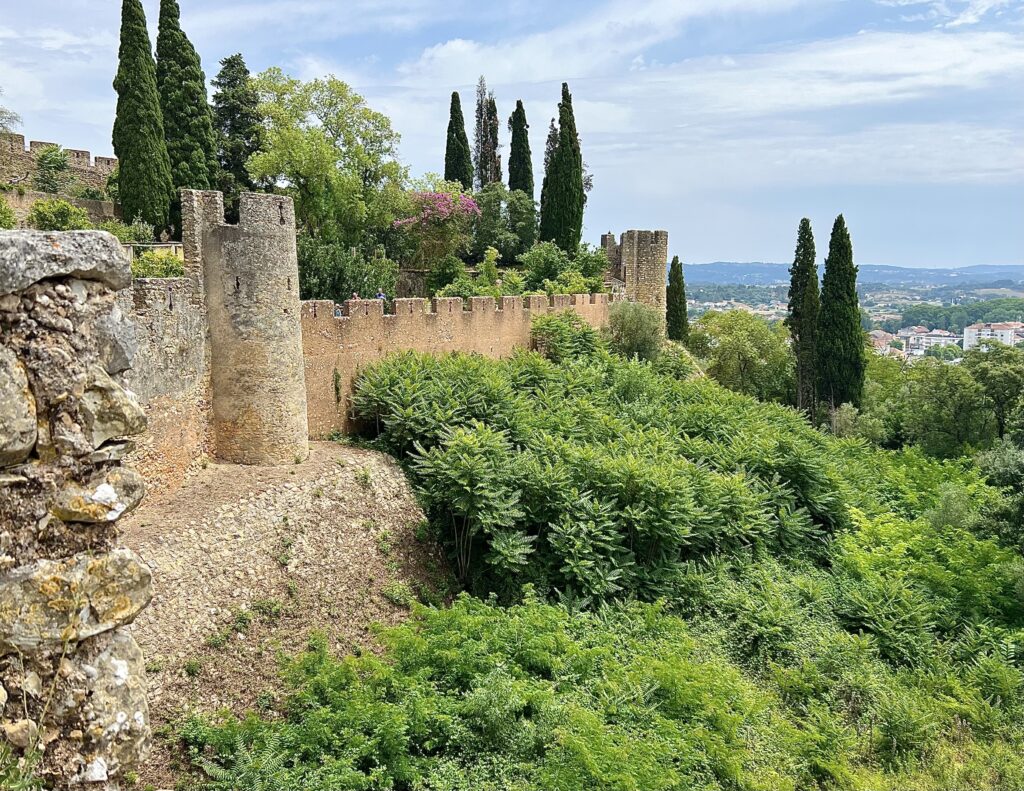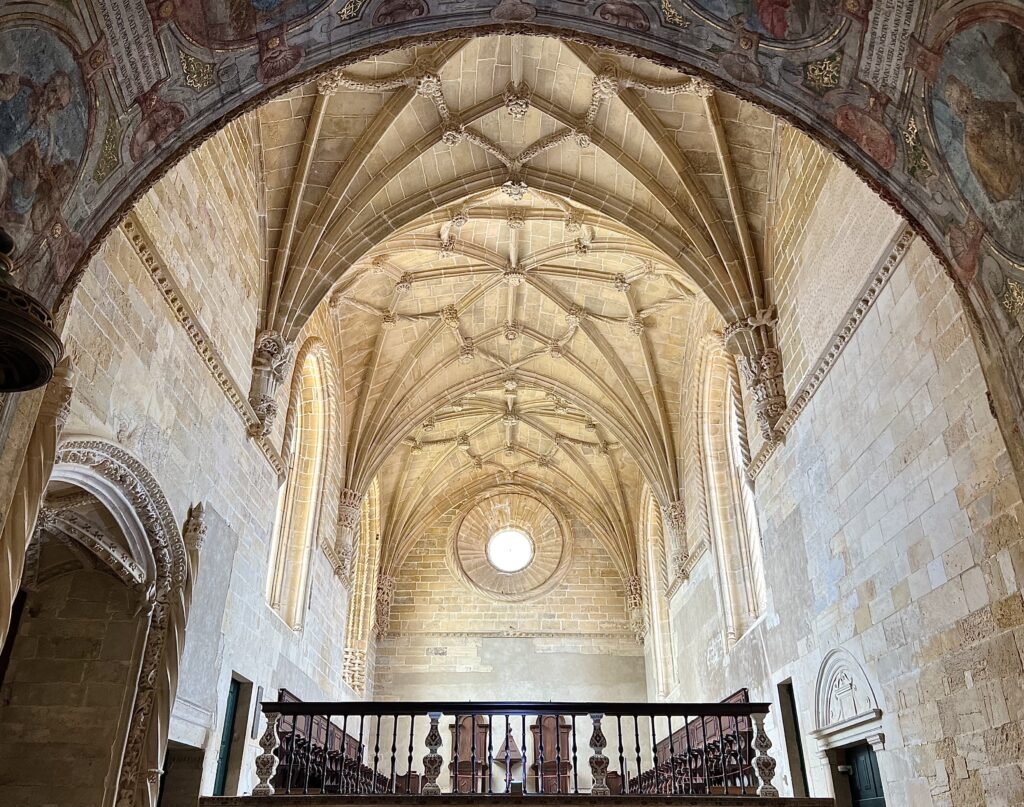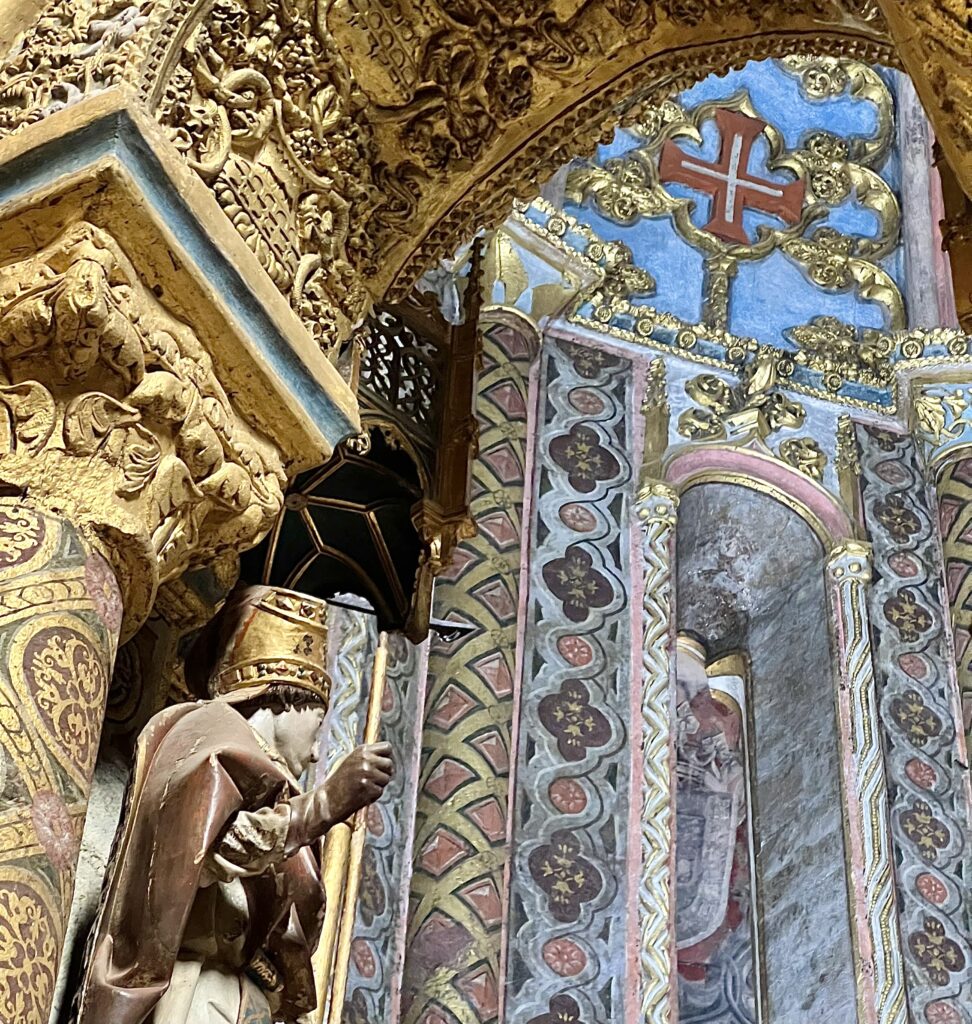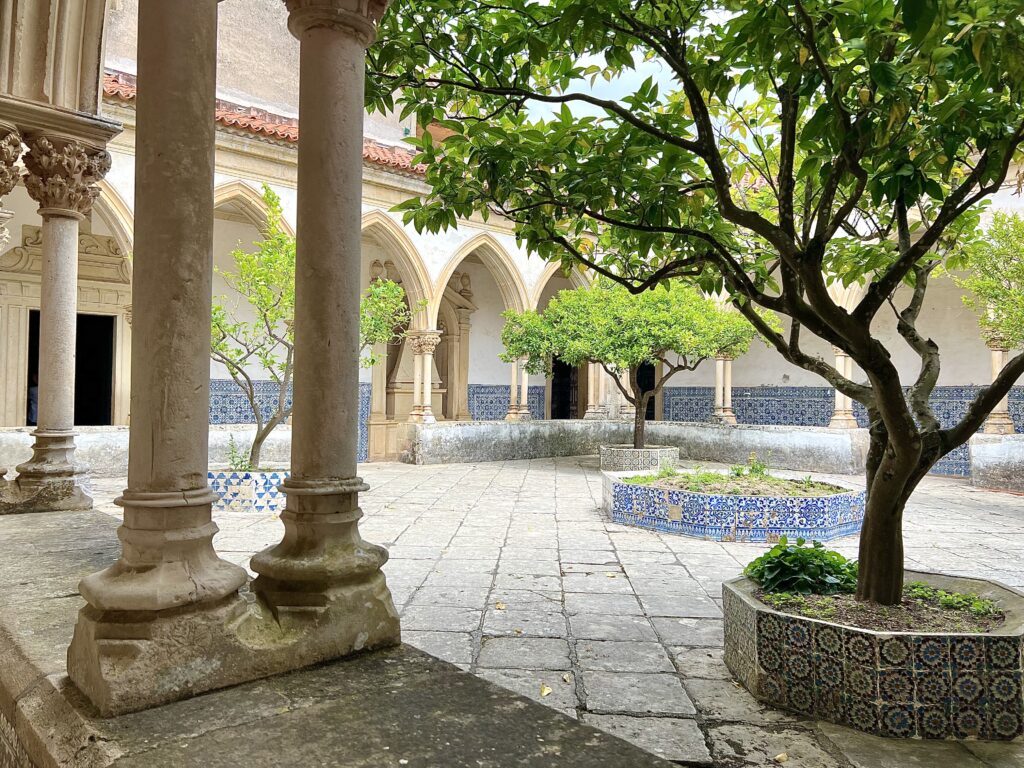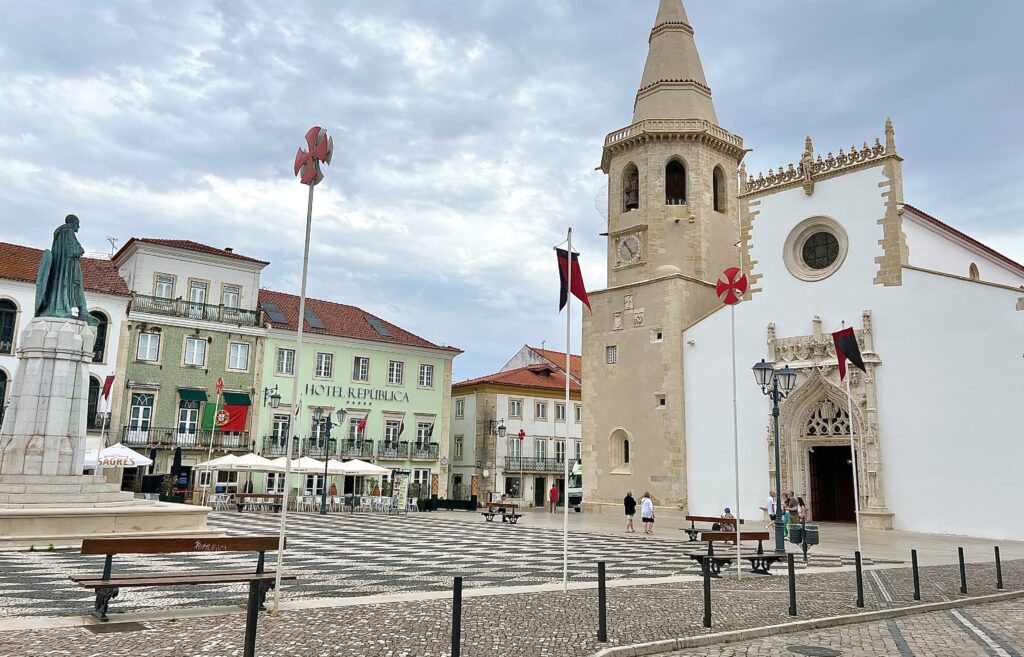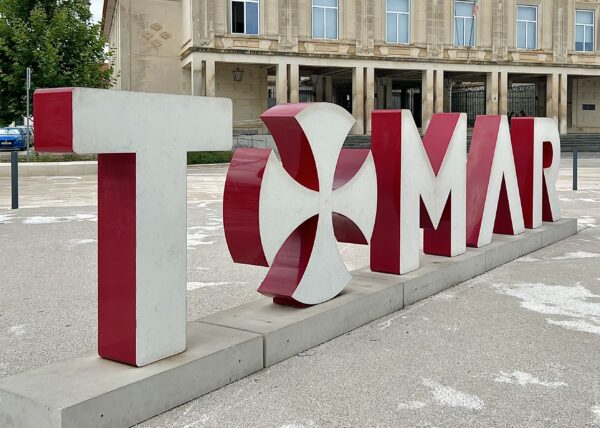The last few days to Tomar included more charming towns with stays in Azinhaga and Vila Nova da Barquinha. Fortunately, the weather changed, and there were no more ‘over the top’ temperatures. The Road continued winding through agricultural landscapes, and a wooded section near Tomar involved lots of ‘ups and downs.’
By then I’d met more walkers — from England, Australia, Croatia, and a few others from Italy. The route, though, is definitely a ‘road less traveled,’ and it will be interesting to see how walker numbers grow in the future compared to the already popular trails from Porto.
After reaching Tomar I spent a rest day in this historical tourist city associated with the Knights Templar, a military order established in the 12th c. to help protect pilgrims. The lightweight Green Foliage Bag was perfect for essentials while sightseeing — at 4.1 oz. it’s easy to forget that you’re carrying a bag.
The early morning view out my hotel room’s window in Santarem — pigeons were up & ready for the day.
Morning glories brightened the downhill path out of Santarem.
This Way in Vale de Figueira
Shady lane!
Grapevines in Sao Vicente do Paul
The Road by Pombalinho literally went through a wheat field — it felt very medieval to be walking in what the pilgrims then must have encountered!
Corn fields were “as high as an elephant’s eye.”
My lodging outside Azinhaga included a swimming pool — it looked refreshing, but I didn’t have a swimsuit so passed on taking a dip.
Tile work in Azinhaga
A bronze sculpture dedicated to farriers reflected the region’s association with horses.
There were several homes with bread bags hanging on gates & doorways and waiting to be filled in the morning — a fun way to receive fresh bread! The checkered bag on this gate had already been filled.
On the edge of Azinhaga 16th c. Igreja de Sao Joao da Ventosa stood in a field with not many other buildings around it. The church was associated with the oldest basilica in Rome and visitors were granted special indulgences. Apparently it’s now empty so may no longer be used (?).
The next town after Azinhaga was Golega, known as “The Capital of the Horse” that hosts equestrian events, including the National Horse Fair in November. A sweet horse greeted me as I walked to the town’s center.
Signs with horses decorated streets — this one directed parking for “horse carts.”
Breakfast at a cafe in Golega’s central plaza
While checking out the plaza I met a fellow pilgrim in need of help with blisters, and a nearby farmacia provided some bandages for protection. Blisters are common among walkers, and it’s important to carry with first aid for them just in case. Also, footwear, including socks, can impact developing blisters. For more info about shoes, socks, & gear see Camino Packing.
16th c. Igreja Matriz da Golega was located in the plaza — azuelo tiles covered the sanctuary.
Heading into Vila Nova da Barquinha
A ceramic cat sat on the roof next to my hotel.
A farmacia’s sign posted 18 degrees Celcius (64 degrees Fahrenheit) as I left Barquina the next morning at 6:00. Walking in the early morning is always a bit magical, especially for the final day.
Public water fountain on the edge of Barquina
By Atalaia there was a ‘long & winding Road’ through eucalyptus groves & other trees.
The first small shrine found on this Camino — many were seen on the route from Porto.
At a ‘bar stop’ in Asseiceira
Delicate trumpet flowers shined in the sunlight.
Near Tomar the Road led past railroad tracks & red-tiled houses.
Destination Tomar! Cooler weather & rain clouds appeared with my arrival. The trail went by residential buildings & the business district before I reached the city center where my lodging was booked. This area comprises many restaurants, shops, and historical sites/churches, and makes a perfect spot for walkers to take a break.
In the center a fountain sculpture represented the bread & flower “tray” headdress worn during the Festa dos Tabuleiros (Festival of the Trays). The towering headdress is composed of bread, flowers, and a crown & dove. The religious festival happens every 4 years and is rooted in ancient harvest celebrations.
My hotel was across from the Rio Nabao, which runs through the ‘old town’ & tourist area. Sprinkles began after checking in but stopped later, so I could wander around nearby streets before nightfall.
On Rua Serpo Pinto the buildings included red crosses associated with the Knights Templar. On the hill in the background stands 12th c. Castillo de Tomar, built by the Templars and designated as a UNESCO World Heritage Site. The next morning I climbed up the stairs to this historical complex and spent part of the day exploring it.
The castle complex, which includes the Convent of Christ, encompasses different architectural styles from its construction over the centuries — Romanesque, Gothic, Manueline, & Renaissance.
The Convent of Christ’s 16th c. nave
The convent’s octagonal chapel (originally built in the 12th c.) may have been modeled after the Church of the Holy Sepulchre in Jerusalem.
The 16th c. chapel’s entrance in the ornate Manueline style
The convent includes 8 cloisters; my favorite was this peaceful one from the 15th c.
The central plaza, Praca da Republica, includes 15th c. Igreja de Sao Joao Baptista and also a stature of Gualdim Pais, founder of Tomar & leader of the Knights Templar.
After my time in Tomar I returned to Lisbon and met Dad there for a weekend-long basketball event, the Portugal Basketball Festival (he’s a retired basketball coach & currently volunteers for the San Diego State Aztecs). Although I missed walking with him, going solo had its own rewards with discoveries made along The Way — the heat, solitude, & travel logistics brought challenges to meet. Until the next Pilgrim Pouch Camino adventure, Ultreia et Suseia!
The rest of the journey: Lisbon to Tomar, Part 1 & Lisbon to Tomar, Part 2


